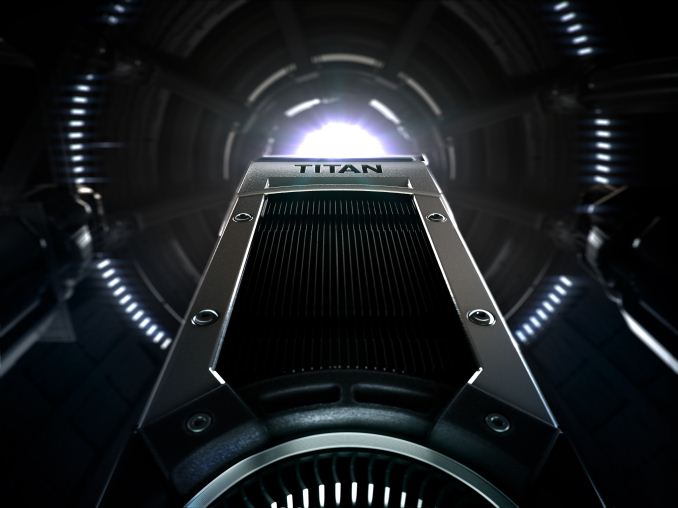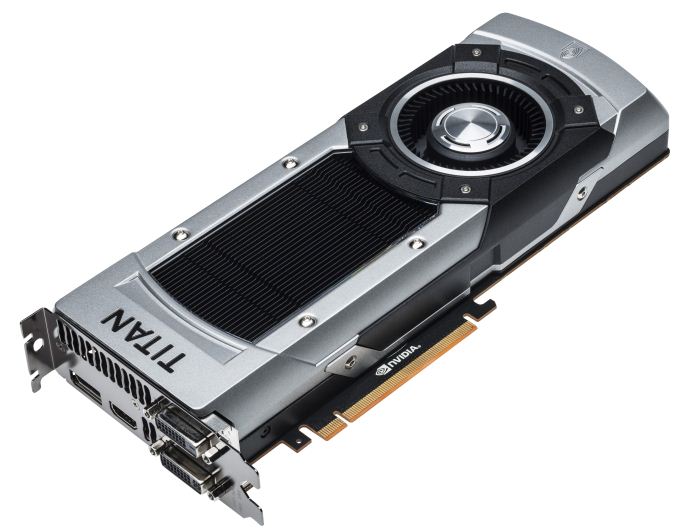NVIDIA's GeForce GTX Titan Black: No Compromises for Gaming & Compute
by Anand Lal Shimpi on February 18, 2014 9:00 AM EST
NVIDIA's GeForce GTX Titan was an absolute beast when it launched. With 7.1 billion transistors and an architecture that separated itself from high-end consumer GPUs, the Titan was worthy of its name. It took 9 months for NVIDIA to make a gaming focused version: the GeForce GTX 780 Ti. Although the 780 Ti gave up double precision floating point performance (FP64) and 3GB of GDDR5, it made up for the deficit by enabling all 15 SMXs and running its memory at a 16% higher frequency. The result was that Titan was a better compute card, while the 780 Ti was better for gamers. You couldn't have both, you had to choose one or the other.
Today NVIDIA is letting its compute-at-home customers have their cake and eat it too with the GeForce GTX Titan Black. The Titan Black is a full GK110 implementation, just like the GTX 780 Ti, with all of the compute focused-ness of the old GTX Titan. That means you get FP64 performance that's only 1/3 of the card's FP32 performance (compared to 1/24 with the 780 Ti). It also means that there's a full 6GB of GDDR5 on the card, up from 3GB on the 780 Ti.
| GTX Titan Black | GTX 780 Ti | GTX Titan | GTX 780 | |
| Stream Processors | 2880 | 2880 | 2688 | 2304 |
| Texture Units | 240 | 240 | 224 | 192 |
| ROPs | 48 | 48 | 48 | 48 |
| Core Clock | 889MHz | 875MHz | 837MHz | 863MHz |
| Boost Clock | 980MHz | 928MHz | 876MHz | 900MHz |
| Memory Clock | 7GHz GDDR5 | 7GHz GDDR5 | 6GHz GDDR5 | 6GHz GDDR5 |
| Memory Bus Width | 384-bit | 384-bit | 384-bit | 384-bit |
| VRAM | 6GB | 3GB | 6GB | 3GB |
| FP64 | 1/3 FP32 | 1/24 FP32 | 1/3 FP32 | 1/24 FP32 |
| TDP | 250W | 250W | 250W | 250W |
| Transistor Count | 7.1B | 7.1B | 7.1B | 7.1B |
| Manufacturing Process | TSMC 28nm | TSMC 28nm | TSMC 28nm | TSMC 28nm |
| Launch Date | 2/18/14 | 11/07/13 | 02/21/13 | 05/23/13 |
| Launch Price | $999 | $699 | $999 | $649 |
Unlike the original Titan, there are no compromises on frequency. The memory runs at a full 7GHz data rate just like the 780 Ti. The GK110 core and boost clocks are up by 1.6% and 5.6% compared to the 780 Ti, respectively. Compared to the original Titan we're talking about anywhere from a 13.8% to a 19.9% increase in performance on compute bound workloads or a 16.7% increase on memory bandwidth bound workloads.
Gaming performance should be effectively equal to the 780 Ti. NVIDIA doesn't expect a substantial advantage from the core/boost clock gains and thus didn't bother with a sampling program for the Titan Black.
The heatsink looks identical to the original Titan, just in black (like the 780 Ti). We've got dissection shots in the gallery below.
We've heard availability will be limited on the GeForce GTX Titan Black. Cards will retail for $999, just like the original Titan.
The Titan Black should be a no-compromises card that can deliver on both gaming and compute fronts. It's clear that NVIDIA wants to continue to invest in the Titan brand, the only question going forward is what will it replace GK110 with and when.



GeForce_GTX_Titan_Black_Bracket_thumb.jpg)













44 Comments
View All Comments
nevertell - Tuesday, February 18, 2014 - link
They should've made it white as white radiates heat better than black :Prandom_user - Tuesday, February 18, 2014 - link
White absorbs less heat than black, but black radiates more efficiently than white.chaos215bar2 - Tuesday, February 18, 2014 - link
I hope you just forgot the /s. White certainly absorbs less heat, but color has absolutely nothing to do with heat radiated.Death666Angel - Tuesday, February 18, 2014 - link
Yes it does. Take some university classes. Or google "black body radiation" and "thermal radiation".Notmyusualid - Tuesday, February 18, 2014 - link
Indeed, never saw a white air-cooled motorcycle engine either....aakash_sin - Wednesday, February 19, 2014 - link
:D +1Guest_56 - Wednesday, February 19, 2014 - link
(sigh)"Surface color is often mistaken as a significant factor in emissivity; it is not." - source: Emissivity article in wikipedia.
You confuse emission of heat (by radiation) with absorption/reflection of visible light frequencies. Also, heat mostly emits in infrared frequencies.
Death666Angel - Wednesday, February 19, 2014 - link
Read: "significant". Never said it plays a big role, just that plays a role.Death666Angel - Wednesday, February 19, 2014 - link
Wow, it states my point right after your quote, which you omitted:"it affects the spectral emissivity at visible wavelengths, which are often negligible when calculating the total emissivity."
svyper1 - Wednesday, February 26, 2014 - link
I think people are mistaking what is heat conductivity and radiation...Light is the electromagnetic wave with frequencies ranging from gamma - ultra violet - visible - infrared - micro - radio waves.
'Heat sinks' aren't designed to absorb radiation. All objects absorb and emit heat radiation if there is some in the system, however, Heat sinks absorbs heat transferred through material, called conduction. Which is then "taken away" by convection - the transference of heat to a gas (air)...
Conduction and convection is transferring the energy between atoms...This is the principle way heat sinks reduce the chip temperature. Being black or white affects the radiation absorption and emission, but this is not what heat sinks are for and so being black is purely for aesthetics...